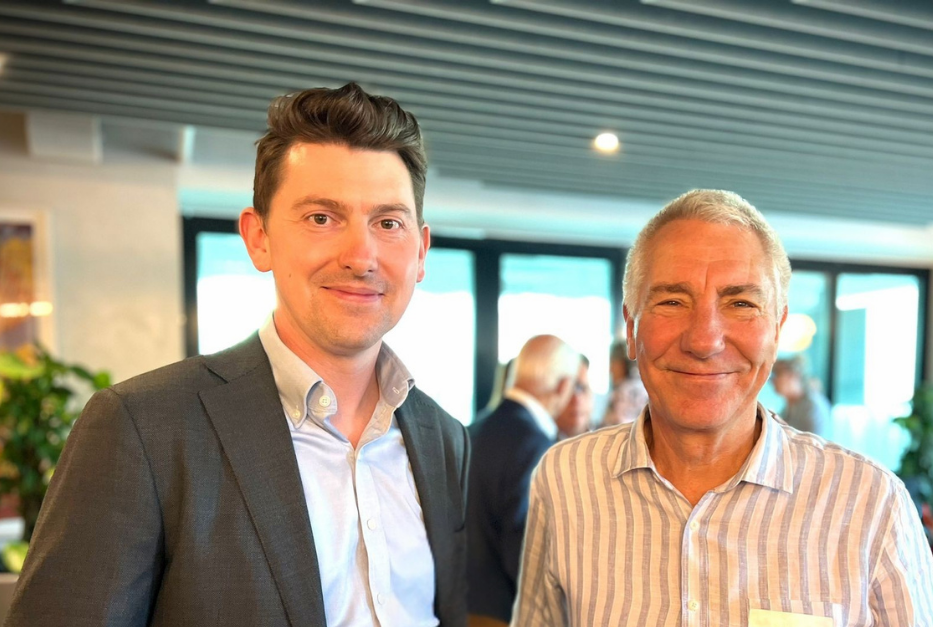
Responding to Disruption with Interim Leadership
Here’s an uncomfortable truth: while you’re still debating whether to post that senior role internally or externally, your competitor just hired an interim leader who’s already three weeks into solving the problem you’re still defining. Welcome to the new reality of business velocity, where the luxury of six-month hiring processes belongs in the same museum as fax machines and annual performance reviews.
Disruption isn’t coming, it’s here, it’s accelerating, and it’s ruthlessly exposing every inefficiency in how organisations approach talent. The companies thriving aren’t just adapting to disruption; they’re weaponising it by fundamentally rethinking how they access leadership capability. They’ve discovered what progressive organisations have known for years: interim leadership isn’t a stop-gap solution, it’s a strategic accelerator.
The Adaptability Advantage
The numbers tell a stark story. Gallup’s latest research reveals that global employee engagement has fallen to just 21%, with manager engagement dropping even more dramatically from 30% to 27%. Meanwhile, 57% of employers report moderate or significant negative effects on productivity from skills gaps, and nearly one in five employees are perceived as not proficient in their roles. This isn’t just a recruitment crisis, it’s a capability emergency that traditional hiring approaches simply cannot address fast enough.
Traditional permanent hires come with baggage. Not the personal kind, the organisational kind. They arrive with expectations shaped by their last company’s culture, processes, and pace. They need time to understand your unique ecosystem, build relationships, and figure out where the political landmines are buried. By the time they’re truly effective, your window of opportunity may have slammed shut.
Interim leaders operate differently. They’re professional adapters, wired to hit the ground sprinting rather than walking. They’ve seen this movie before, multiple times, across multiple industries, and they know how to read organisational DNA quickly. While permanent hires are still asking “How do things work here?”, interim leaders are asking “What needs to change, and how fast can we do it?”
This adaptability isn’t just about speed, it’s about perspective. Interim leaders bring pattern recognition from diverse contexts. They’ve navigated digital transformations in manufacturing, led restructuring in financial services, and driven innovation in healthcare. They’re walking libraries of what works, what doesn’t, and what kills momentum. That cross-pollination of ideas and approaches is invaluable when disruption demands fresh thinking.
Consider the interim COO who transformed a traditional retailer’s supply chain by applying lessons learned from managing disaster relief logistics. Or the interim CTO who accelerated a bank’s digital transformation using frameworks developed in the gaming industry. These aren’t anomalies, they’re examples of how interim talent brings adaptive intelligence that permanent hiring often can’t access.
Staying Agile in an Inflexible World
Agility isn’t just about moving fast, it’s about moving smart, and that requires organisational flexibility that most traditional structures can’t support. Permanent headcount comes with permanent overhead, permanent politics, and permanent resistance to change. Interim leadership flips this dynamic, creating pockets of high-performance capability that can be deployed precisely where and when they’re needed most.
Think of interim leadership as organisational special forces. Elite units deployed for specific missions with clear objectives and timelines. They’re not constrained by the usual organisational inertia because they’re not invested in preserving the status quo. Their success is measured by results, not politics, and their timeline is measured by impact, not tenure.
This creates a different dynamic entirely. Teams respond differently to interim leaders because everyone understands the mission is time-bound and results-focused. There’s less posturing, fewer turf wars, and more urgency around execution. It’s remarkable how clarity of purpose and timeline can cut through organisational complexity.
Smart organisations are building this agility into their operating model. They maintain core permanent leadership whilst strategically deploying interim capability for transformation initiatives, crisis response, market expansion, or innovation projects. It’s a hybrid approach that combines stability with surge capacity.
Derisking the Talent Equation
Traditional hiring is expensive gambling. You’re betting six-figure salaries, equity packages, and significant onboarding investment on limited data points: interviews, references, and gut instinct. The cost of a bad senior hire isn’t just their salary, it’s the opportunity cost of lost momentum, demoralised teams, and delayed results. McKinsey research suggests that failed senior executive hires can cost organisations up to $2.7 million when you factor in all the downstream impacts.
In early 2025, CEO departures reached record highs, while interim appointments surged. Research cited in Forbes indicates that nearly 25% of new CEOs appointed in the first two months of 2025 were on an interim basis, a significant increase from 8% during the same period in 2024.
The situation is compounded by a leadership development crisis. Research by Gallup shows that less than half of the world’s managers (44%) say they have received management training, yet 70% of team engagement is attributable to the manager. When 44% of employers cite evolving business needs and 42% point to constantly evolving skills requirements as primary causes of skills gaps, the traditional approach of hoping permanent hires will adapt becomes increasingly untenable.
Interim leadership fundamentally changes this risk profile. Instead of betting on potential, you’re buying proven performance. Most interim leaders come with portfolios of completed assignments, measurable outcomes, and references from multiple contexts. You’re not guessing how they’ll perform under pressure, you’re seeing evidence of how they’ve already performed under similar pressures.
The financial model is equally compelling. Whilst daily rates for top interim talent might seem high, the total cost of engagement is often lower than permanent hiring when you factor in recruitment fees, onboarding costs, and the risk of having to repeat the process if the hire doesn’t work out. More importantly, interim leaders are incentivised to deliver quickly because their reputation depends on measurable results within defined timeframes.
This de-risking becomes even more critical in uncertain markets. When economic headwinds make permanent headcount risky, interim leadership provides access to senior capability without long-term commitments. Organisations can scale expertise up or down based on market conditions whilst maintaining strategic momentum.
The Perfect Fit: When Interim Makes Most Sense
Not every role or situation calls for interim leadership, but the sweet spots are expanding as business velocity increases. The data reveals why: with only 37% of organisations planning to increase their training investment and skills gaps affecting nearly one in five employees, traditional development approaches aren’t keeping pace with market demands.
Digital transformation initiatives are perfect interim territory. These projects require deep technical expertise, change management capability, and the political independence to challenge established ways of working. An interim CTO or interim head of digital can drive transformation more aggressively than someone who has to live with the long-term political consequences of disrupting comfortable patterns.
Market expansion represents another prime opportunity. Launching into new geographic markets or customer segments requires different skills and approaches than maintaining existing operations. An interim leader can build the beachhead, establish the foundation, and hand over to permanent leadership once the market opportunity is validated and scaled.
Complex projects with defined endpoints, mergers and acquisitions, major system implementations, regulatory compliance initiatives, benefit enormously from interim leadership. These situations demand deep expertise, intense focus, and the ability to work across organisational boundaries without being constrained by traditional hierarchies.
The organisations winning in disrupted markets aren’t just using interim leadership reactively, they’re building it into their strategic capability. They maintain relationships with proven interim talent, understand where interim solutions can accelerate outcomes, and aren’t constrained by traditional thinking about permanent versus temporary roles.
Final Thought
This isn’t about replacing permanent talent. It’s about building a more agile, responsive leadership model. One that recognises the speed of change, and the need for capability that can match it.
If you’re navigating disruption and need support from proven executive talent, I’d welcome a conversation.
Get in touch: [email protected]
Josh Mullens is Partner – Interim Executive at Future Leadership. With more than 15 years’ experience delivering senior interim appointments across Australia and the UK, Josh works with clients across commerce, industry, government, and professional services to navigate disruption and deliver critical outcomes.


